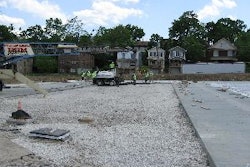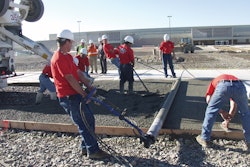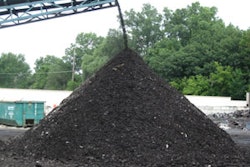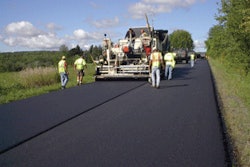During a climate change symposium in London in 2009, Secretary of Energy Steven Chu said white roofs and concrete surfaces can help stop global warming. His quote: "If you take all the buildings and make their roofs white and if you make the pavement more of a concrete type of color rather than a black type of color, and you do this uniformly ... it's the equivalent of reducing the carbon emissions due to all the cars on the road for 11 years; you just take them off the road for 11 years."
Chu, a Nobel Prize-winning physicist, didn't just pull this statistic out of his hat -- it's based on data generated by Dr. Art Rosenfeld of the California Energy Commission. Since 2005, California has mandated flat roofs on new commercial buildings be white. And a similar mandate is in the works for residential buildings.
I certainly don't want to get into a politics debate, nor do I want to open my mailbox to a flood of letters about global warming. But safe territory, I believe, is the opportunities the concrete industry will see in this "go white to go green" way of thinking.
Simply put, dark surfaces absorb more heat than light surfaces. Translation for the concrete industry: Asphalt surfaces absorb more heat than concrete surfaces, and this trapped heat contributes to the "heat island" effect.
According to the U.S. Environmental Protection Agency (EPA): "The annual mean air temperature of a city with 1 million people or more can be 1.8-5.4°F warmer than its surroundings. In the evening, the difference can be as high as 22°F."
The EPA considers concrete a "cool pavement," that is a paving material that helps mitigate the heat island effect by reflecting heat back into space. So what are the benefits of lowering the heat island effect?
One of the most obvious benefits is less energy required for air conditioning. Another benefit would be in regards to stormwater runoff. During a rainstorm, warm pavement increases the temperature of the rain. If that rain is running off into local lakes and rivers, it's artificially warming the temperatures of those bodies of water. That can have a detrimental effect on fish and plant life.
These are strong arguments for widespread use of concrete pavements, but you're wondering how you can convince one customer to "go white." How can your client realize the benefits of concrete pavement on a small scale?
A concrete surface reflects more light than an asphalt surface, making it brighter and potentially safer at night. Or, an owner can turn that increased light reflectivity into energy savings through decreased lighting needs. Additionally, if your customer's building will be considered for LEED certification (Leadership in Energy and Environmental Design), a cool pavement can work toward a credit for Heat Island Effect: Non Roof.
The concrete industry has been touting the economical advantages of concrete over asphalt through life-cycle maintenance costs. And recently the increase in the cost of asphalt has brought the initial price point of the two materials into the same ballpark. The Portland Cement Association (PCA) has recently released several reports on the advantages of concrete paving over asphalt. Visit the PCA Web page dedicated to the topic at Cement.org/paving_realities.asp. There the PCA explains how the oil industry's improving coker technology is increasing the amount of light crude that can be extracted from a barrel of oil, decreasing the amount of heavy crude oil, which goes into asphalt materials.
I encourage you to use this information to help your customers "go white to go green." And don't forget the most important factor in choosing a concrete pavement over asphalt - concrete just looks better.



















